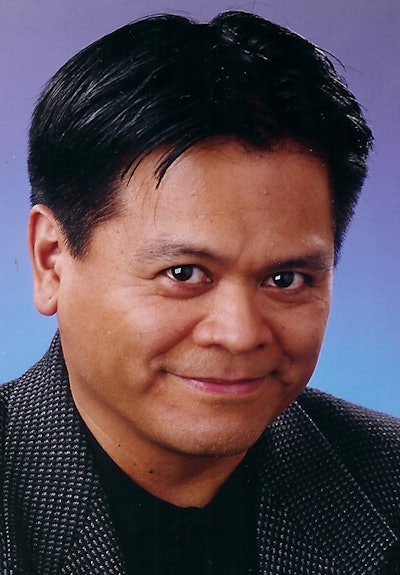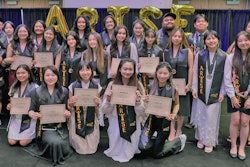The recent revelation that Johns Hopkins, once thought to be a “good guy”, owned four slaves himself is one of those backward looks in time that brings about a major shame.
However awkward, exposing the truth is always important.
For Asian Americans, looking back at history–specifically Pearl Harbor Day, Dec. 7, 1941–uncovers the same kind of shame that conflicts when squaring with one’s sense of fairness and diversity.
In 1941, the surprise bomb attack in Hawaii brought the U.S. into World War II. By Dec. 8, President Roosevelt delivered a national address and declared war on Japan.
By Dec.13, west coast cities from Stockton to Seattle organized boycotts against Japanese American businesses.
I had never stopped to wonder what the Asian American reaction, specifically the Filipino American reaction, was to either the bombing at Pearl Harbor or the subsequent internment order of Japanese Americans.
I just assumed we had the same perspective as we do now–that it was all a horrible setback to Japanese Americans and Asian Americans, in general, and that we were all in solidarity.
 Emil Guillermo
Emil GuillermoBut that’s my 21st century view of “us” back then in 1941.
In fact, there was no “Asian America” back then.
All our communities under that generic umbrella were all struggling, one Asian ethnic group at a time, from racist policies against Asians starting with the Chinese Exclusion Act.
From a White perspective it was a de facto “divide and conquer” situation. There was no solidarity among Asians. After Pearl Harbor, there was only solidarity against both the Japanese and Japanese Americans.
Young Filipino Scholar’s Book
The fervor grew within the Filipino American community ten hours after the initial attack. The Japanese went on to attack the Philippines and laid the groundwork for a full-fledged occupation of Manila and the islands, complete with a Filipino puppet government.
For the 40,000 Filipinos who had come to the U.S. since the early 1900s, primarily as American nationals, whose side would you be on?
It made Pearl Harbor a bonding moment for Filipinos and Chinese with Whites.
“Once seen as half-human, inferior savages, Chinese and Filipinas/os were suddenly America’s allies, while the Stockton Japanese community immediately found itself the target of racist attacks from their Asian neighbors as well as whites,” wrote the late Dawn Bohulano Mabalon, a Stanford-trained Ph.D , who was a tenured professor of history at San Francisco State University, and at the time of her death, a promising young Filipino American scholar in American history.
Her book Little Manila Is in the Heart, talked about how Pearl Harbor changed the racial pecking order quickly. “Once the favored racial minorities of white elites in the Delta, ethnic Japanese found themselves under racial attack and intense scrutiny in Stockton through the winter and spring of 1941-1942.”
More surprising are the oral histories captured by Mabalon.
Camila Carido said Filipinos were prepared to arm themselves against the Japanese American community. Carido also said that she and many Filipinos were for the internment of Japanese Americans.
“Oh, lotsa Filipinos were armed, ready to kill the Japanese,” Carido told Mabalon. “Lucky thing the Japanese were sent out to the camps, otherwise there would have been lotsa Japanese just fall out and died, and nobody knows? They had bad feeling against them, especially with all the killing in the Philippines. Lotsa Japanese here [in Stockton] they just disappear! Good thing that President Roosevelt had that idea to bring the Japanese, even if you are an American citizen, to the camp. Otherwise, there were lotsa people killed.”
The Stockton Daily Record reported on February 20, 1941, a day after the internment announcement, at least two Japanese had been murdered mysteriously since the war began. Asian American historian Nelson Nagai also confirmed to Mabalon that several Japanese residents were killed by Filipinos after Pearl Harbor, but no one was ever arrested.
It Takes Diversity to Tell the Untold Story
We’ve long known about the “infamy” of Pearl Harbor from a xenophobic U.S. perspective. We blister at the “N” word now. We’ve forgotten about the ugliness of the “J” word—“Jap.” It was used to show passionate patriotism and a hatred for Japan.
It was simply racist, but also a kind of self-xenophobia when used by Asians in America.
Some Filipinos did help Japanese Americans forced to abandon their farms. Prior to the war, a few Filipinos intermarried into Japanese American families. Many left the state in an attempt to escape the backlash.
But most Filipino and Chinese in California were all to happy to join in the white chorus, shamelessly using the “J” word to enflame the hate and jingoism of the day.
Infamy? Turns out there was enough of it from all perspectives, creating those shameful moments in a self-centered world when diversity values were non-existent.
It takes young diverse scholars like the late Bohulano Mabalon to find it and make sure all the stories are uncovered.
When diversity works in the academy, all of our histories, good and bad, are told.
Emil Guillermo is a journalist and commentator. He writes for the Asian American Legal Defense and Education Fund. You can follow him on Twitter @emilamok




















